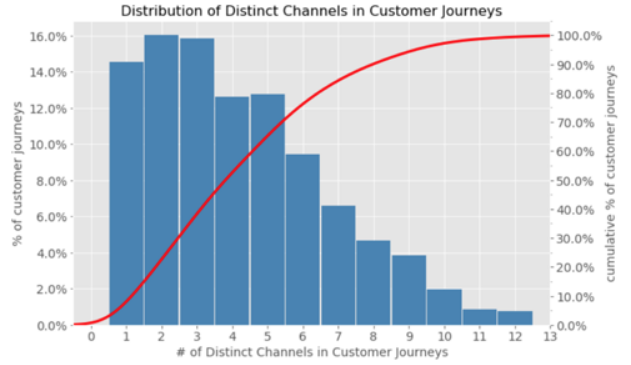Unifida’s Client Services Director Jo Young reflects on the recent Direct Commerce Association (DCA) Summit:
I was fortunate enough to be asked to speak at the recent Direct Commerce Association (DCA) Summit in London. It’s a popular, friendly event, attended by a range of direct and multichannel retail businesses at all stages of growth, serving both niche and mainstream market segments.
The agenda was packed with retailing ‘hot topics’ and sessions sharing knowledge and experience between businesses. I gave a presentation on how omnichannel marketing attribution measures the way that channels work together, and how companies can use this to optimise their budgets. I outlined how one of our clients, Wentworth Wooden Puzzles, introduced attribution, and how the company is changing its focus on different media for different customer types to maximise the marketing budget.
With marketing budgets being heavily scrutinised, there is a constant pressure to prove marketing return and tighten up on waste. Omnichannel marketing attribution measures the way that channels work together (whether they are trackable or non-trackable) and helps optimise precious marketing budgets.
Earlier in the day at a panel session on Marketing Metrics, attendees were asked if they had any form of marketing attribution in place. Only a handful of people from the large audience raised their hands. This was startling and revealed a key marketing attribution knowledge gap – not only in attribution, but probably in the true effectiveness of marketing budgets too. Speaking to delegates afterwards, some said that, when it comes to marketing attribution, they did not know where to start, or thought it would be too expensive.
While many companies recognise the need to have accurate media metrics and spend their budgets wisely, they don’t realise that there are easy, cost-effective marketing attribution solutions out there that make the most of their first-party data, and can help them report accurately in order to optimise their marketing resources.
To see attribution explained simply, you can watch UniFida’s video on attribution basics.
In our Resources section, we also have a variety of articles on how organisations can benefit from attribution, including a blog post on measuring the long term impact of direct mail over other channels.
UniFida is the trading name of Marketing Planning Services Ltd, a London based technology and data science company set up in 2014. Our overall aim is to help organisations build more customer value at less marketing cost.
Our technology focus has been to develop UniFida. Data science business comes both from existing users of UniFida, and from clients looking to us to solve their more complex data related marketing questions.
Marketing is changing at an explosive speed. Our ambition is to help our clients stay empowered and ahead in this challenging environment.



 When we looked at the impact of media in converting new customers, the % influence of direct mail (catalogues) at the start of the sales funnel was even more pronounced, but email was less of a Closer and its influence on new sales was more evenly split across the sales funnel.
When we looked at the impact of media in converting new customers, the % influence of direct mail (catalogues) at the start of the sales funnel was even more pronounced, but email was less of a Closer and its influence on new sales was more evenly split across the sales funnel.


